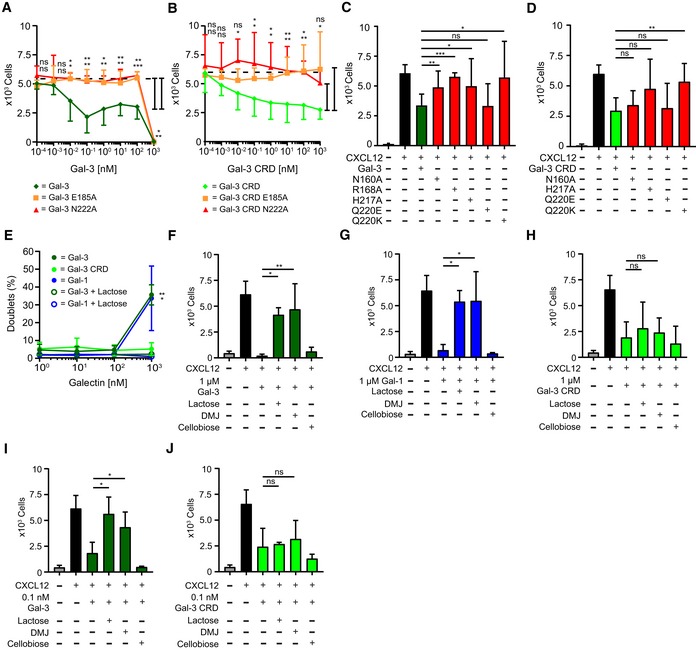-
A, B
Jurkat T cells migrated in the presence of 10 nM CXCL12 with increasing concentrations of E185A (orange, n = 4) and N222A (red, n = 5) mutants of (A) Gal‐3 and (B) Gal‐3 CRD.
-
C, D
Jurkat T cells migrated in the presence of 10 nM CXCL12 with 10 nM (C) Gal‐3 and (D) Gal‐3 CRD mutants as indicated (C, D: n = 3).
-
E
Aggregation of Jurkat T cells in the presence of 1 nM to 1 μM Gal‐3 and Gal‐1 alone and with 70 mM lactose, and Gal‐3 CRD, was determined by flow cytometry (n = 4).
-
F–J
Jurkat T cells migrated with 10 nM CXCL12 alone and in the presence of (F) 1 μM Gal‐3, (G) Gal‐1, (H) Gal‐3 CRD, and (I) 0.1 nM Gal‐3 and (J) Gal‐3 CRD in the presence of 70 mM lactose or cellobiose or after treatment of cells with 150 μM DMJ.
Data information: Cell migration is shown as absolute cell counts. Data represent the mean ± SD from the indicated number of independent experiments each performed in three technical replicates, and these were statistically analyzed by using (A, B, E) a single sample
t‐test or (C, D, F–J) by an unpaired
t‐test against the effect of the chemokine alone or as indicated (*
P ≤ 0.05, **
P ≤ 0.01, ***
P ≤ 0.001).

